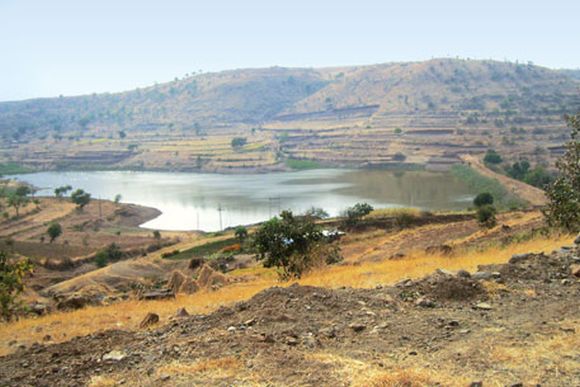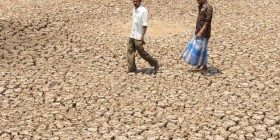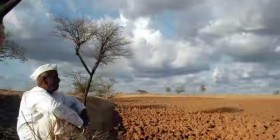A large part of Maharashtra has been declared drought-hit. The government has failed to deal with the crisis, report Aparna Pallavi and Akshay Deshmane. In the past 10 years Rs 60,000 crore has been spent on watershed development
Maharashtra is a pioneering state in watershed development. It has conserved, regenerated and judiciously managed its water resources in 12.6 million hectares (ha) of the state’s 24.1 million ha that have 43,000 micro-watersheds. Development work has been done in 42 per cent of Marathwada region, the worst affected by drought.
Umakant Dangat, state agriculture commissioner, says Rs 60,000 crore has been spent on watershed development in the past 10 years. But these are all government data. Ground reality is quite different. Water-starved, poverty-stricken and migration-prone Gourwadi village in Beed district shows how the state government has failed in watershed development work despite making huge expenditures.
Gourwadi has two tanks to meet its water requirements. The first is a five-minute walk from where people live, and the second is 200 metres down a steep, dangerous slope. People take the difficult 2.5-km track to fetch drinking water from the second tank because the first one is damaged and has been empty for years. “We have been asking government officials to repair the damaged tank so that drinking water is close by, and for a mechanism to irrigate farms from the second tank,” says former panchayat member Aba Dadarao Gadge.
But in January this year, the agriculture department began work to set up a drinking water pipeline at the second tank instead of repairing the damaged tank. Longer pipeline also means more expenditure. “There is enough water in the second tank for two crops, but now we are not able to get even one decent crop,” he says. The ambitious drinking water pipeline project has now been abandoned.
Gadge gives another instance of government’s callousness. Some six years ago, the agriculture department built contour trenches on the hills surrounding Gourwadi. It improved moisture in the soil, which helped agriculture. It also gave employment to people. However, the department did not care for its maintenance and now the trenches have silted.
“Watershed development demands an integrated approach based on geo-hydrological characteristic of the watershed,” says S B Varade, retired director of Water and Land Management Institute, Aurangabad. “It requires multiple treatments, including contour and compartment bunding, creation of vegetation to conserve moisture and construction of water-harvesting structures in the right sequence from ridge to valley in a time-bound manner.”
If watershed development work is properly carried out and groundwater recharge is effective, water storage for irrigation is the byproduct, says M N Khadse of non-profit Dharamitra, which has played a key role in implementation of watershed programmes in Vidarbha. But government’s watershed programmes concentrate mostly on construction of water-harvesting structures. It is seen as an irrigation tool.
“Government’s faulty approach creates false hopes and destroys people’s faith in the effectiveness of watershed work,” says Khadse, who is also member of Maharashtra State Water Conservation Advisory Council and Vidarbha Statutory Development Board.
In absence of work many farmers take up watershed work under Mahatma Gandhi National Rural Employment Guarantee Scheme. But most projects under the scheme do not get completed, says Vijay Anna Borade, former member of the state Water Conservation Advisory Council and engineer of the highly successful Kadwanchi watershed in Jalna district. Instances of Hiware Bazar in Ahmednagar where people used the employment guarantee programme for water revival are rare.
Please follow and like us:






Leave a reply